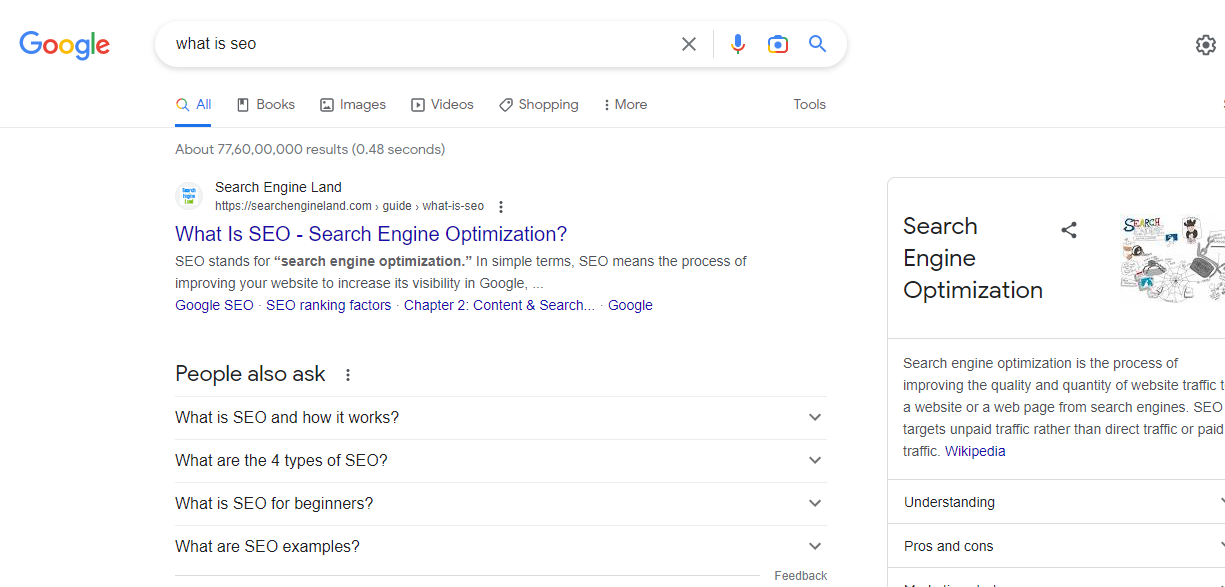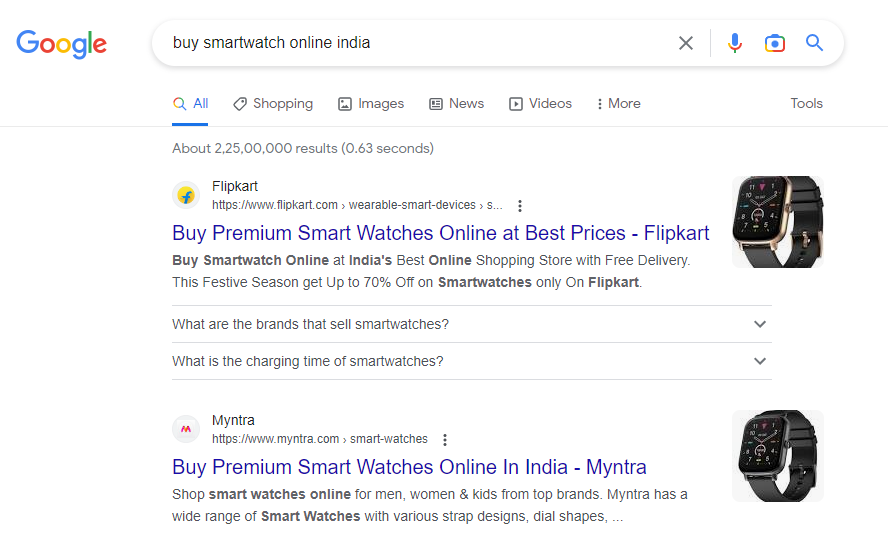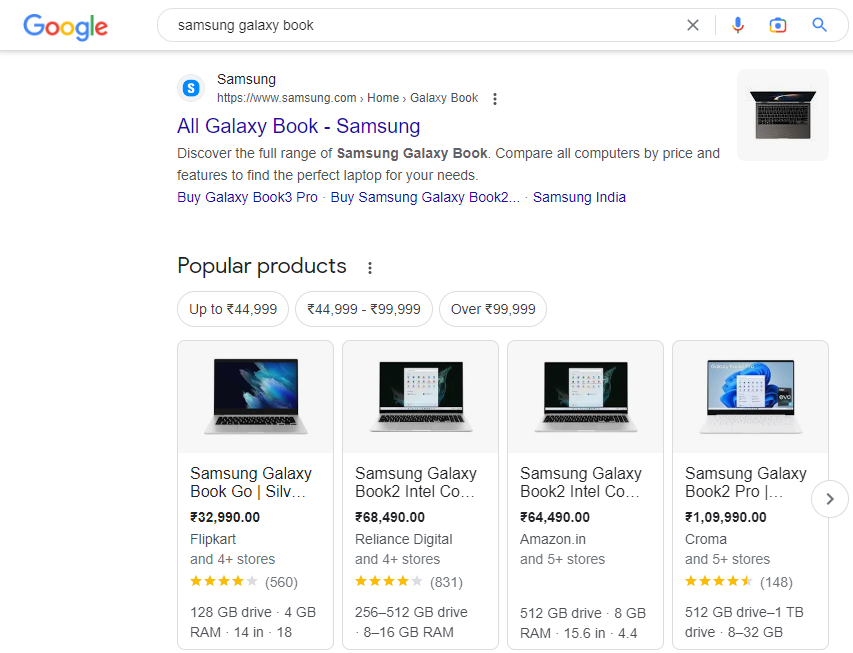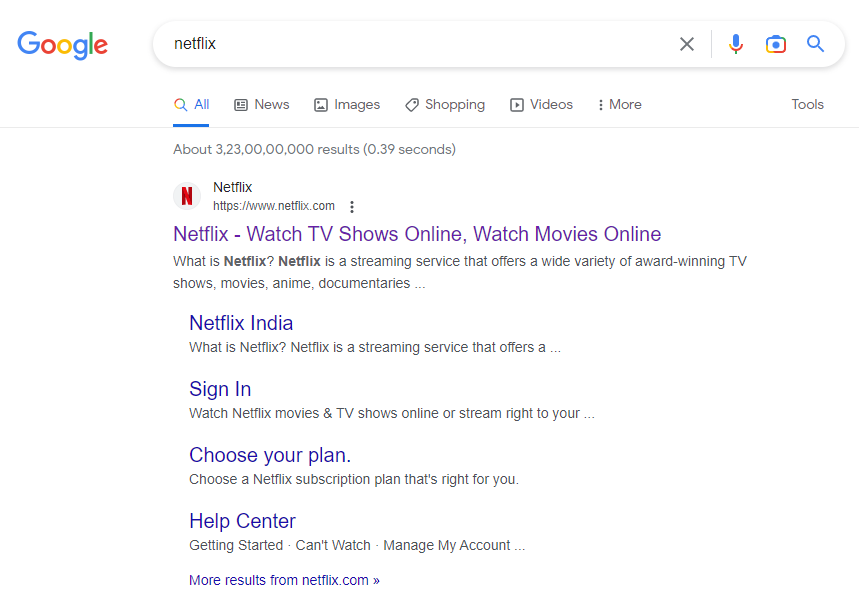Search Intent is the backbone of a well-optimized landing page. Google prioritizes search results that match users’ search intent. It is improving its algorithm to provide the best possible user experience and generate accurate results for their query. Therefore, before carrying out SEO, you need to make sure that page fulfills the search intent of your target audience. In this article, we will cover on what is search intent and how to use it for SEO.
Page Contents:
What is Search Intent?
Search Intent describes why someone conducts an online search. Everyone who uses a search engine is looking for a solution to their problem. They are looking for answers to specific questions, researching online purchasing resources, or wishing to visit a specific website.
It represents the wants and needs of the user. Consider the iPhone: the search intent for purchasing an iPhone differs from the search intent for the iPhone’s history. Despite the fact that the keyword is iphone, the search intent is different.
Why Search Intent is crucial for SEO?
We can create the best content in the world, but if the keywords we target don’t match the user’s intent, our efforts will be futile. To ensure that our content reflects user intent, we must conduct extensive keyword research and analyse the search intent underlying those keywords. This allows us to create content that is relevant to our target audience’s needs and expectations.
The primary goal of search engines such as Google is to provide users with relevant results. Understanding search intent improves your chances of ranking in Google SERP results.
As a result, search engine optimization (SEO) prioritises factors such as keyword targeting, content quality, and user experience. Businesses can attract more organic traffic and improve their online visibility by optimising for search intent. Search Intent is important for SEO as:
- Google prioritises search intent for any search query
- Higher likelihood of improving rankings on SERPs
- Maximizes your reach across funnel stages
- Improves accuracy and relevancy of the search result
Types of Search Intent
- Informational Intent: People looking for information about a particular topic or thing is categorised as Informational Intent. This can be a how to guide, a definition, a recipe or any other kind of information.
- Navigational Intent: People with this type of intent are looking to visit or navigate to a specific website as it is quite easier to search for the website in Google than typing the URL in the address bar.
- Transactional Intent: When people search with the intent of buying something, it refers to Transactional Intent. It can be a product, service or subscription. At this stage, users are not researching products or services but looking for buying.
- Commercial Intent: People want to conduct research before making a purchase decision. This occurs when users investigate a product or service to know about it more before buying it. Users focus on comparing different brand items to find the best fit for them.
How to find out the search intent?
One of the easiest ways of determining search intent is analysing the SERPs. Enter the keywords in the search bar and check the results that show up with the particular keyword. There are different search results for each intent type.
Informational intent: Informational intent mainly showcases condensed information in the form of knowledge graphs, featured snippets and related questions. As shown in the image below, when we entered the keyword phrase ‘what is seo’, the following result was displayed.
Commercial intent: The SERP results will showcases paid results at the top of the search engine result page. They tend to provide information regarding the brand rather than general information.
Transactional intent: Transactional SERP results mostly comprise of paid results, shopping results, shopping carousels, reviews, etc. They can also include map to the specific location of the brick and mortar store.
Navigational intent: These searches mostly showcase the relevant page that a user is searching for online. As an example, if the user searched for Netflix, the first result shown will be of Netflix homepage.
Some other ways to find out the search intent include:
- Research keywords and phrases your audience is searching online.
- Use Google autosuggest feature to find out the phrases that people are searching.
- Evaluate the search intent using Google related search feature at the bottom of the page.
- Analyse the People Also Ask feature.
How to use it for SEO?
- Once you have the keyword list your audience is searching for online, use them throughout your content that is in the title, body, headings, metadata and so on.
- Craft your website copy and page content revolving around your target group’s search intent.
- Take a look at the competitor sites and evaluate how they are ranking at the top search results and conduct a SWOT analysis.
- Involve customer at all stages of their journey. You can also nurture the clients with emails, newsletters, ebooks by requesting them to sign up for more information.
Consumer demands are constantly evolving. They are now looking for content that solves their queries and makes the purchasing decision easier. In today’s digital market, search intent is extremely important if you want to succeed with content marketing and SEO. It is important that the content match the terms people are searching for online as well as their search intent.
Google’s recent algorithm updates have been heavily focused on user experience, but the company is continuing to prioritise user intent and making its search engine more conversational in order to provide users with the most accurate search results.
This means that creating content that aligns with user search intent can help improve your website’s ranking on Google. Additionally, by delivering valuable content that answers their questions, you can engage potential customers and drive more conversions.



